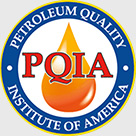Clean Burn FAQ’s
1. How much used oil must a Clean Burn owner generate per year to make buying a used-oil furnace or boiler a practical decision?
The average minimum volume of used oil a company must generate annually is between 500 and 700 gallons. Companies can also burn #2 fuel oil if they run short of used oil.
2. Doesn’t a used-oil furnace produce black, sooty smoke and pollute the air?
Absolutely not. A Clean Burn furnace burns as cleanly as a #2 fuel-oil furnace. In fact, a Clean Burn furnace is designed to burn #2 fuel oil in addition to used oil.
3. Won’t various viscosities of crankcase or transmission oil affect the combustion efficiency of my furnace?
No. Clean Burn’s state-of-the-art burners are designed to accommodate a wide range of oil viscosities, and the patented metering pump system delivers the appropriate fuel flow without the need for any manual adjustments.
4. How often will a Clean Burn product owner have to clean the ash from inside the furnace?
Expect to clean a Clean Burn furnace every 1000 hours of operation, on average. Cleaning a furnace is a safe and easy procedure, which takes only about 30 minutes.
5. Are Clean Burn furnaces backed by any kind of warranty?
Yes. Clean Burn provides industry leading warranties on all of its products, including a 10-year limited warranty on the combustion chamber and heat exchanger, and a one-year warranty on all burner parts.
6. What’s the average length of time for payback on a used-oil furnace?
Depending on average temperatures in a specific region, customers generally experience an 18 to 24 month return on investment.
7. What is “cradle-to-grave” liability and how can it affect the way a clean Burn customer disposes of used oil?
The federal government holds businesses directly and irrevocably responsible for pollution management, clean-up and disposal control of used oils they generate. This responsibility constitutes a “cradle-to-grave” liability, which remains with the generator of the used oils, even if the oils have been collected and transported off-site. Clean Burn heating systems greatly reduce this liability, while providing “free heat” for the facilities in which they are used.
8. Isn’t it more convenient and less troublesome for a business to contract with a hauler or refiner to transport used oil?
It may be easy for a company to contract with a hauler to pick up and dispose of used oil, but companies would then be giving away valuable fuel which could be used for free heat generated by a Clean Burn Heating System.
9. Is there any way to duct a used-oil furnace?
Yes, Clean Burn furnaces can be ducted and are UL approved for this application.
10. What are the most appealing aspects of Clean Burn products to customers?
Clean Burn products provide both financial and environmental benefits, allowing customers to recycle their used oils on-site, turning these waste products into a valuable fuel source. Every gallon of used oil burned for heat recovery saves a business money that would otherwise have been spent on natural gas, propane, electricity, fuel oil, etc. If not recycled through Clean Burn furnaces and boilers, this same oil would be collected and transported across our highways, posing a considerable risk of spills and contamination to the environment.
11. If a Clean Burn customer burns about 1,500 gallons of used oil a year, how much is he or she saving on fuel bills?
Approximately $3,750.
12. What impact do Clean Burn products have on the environment overall?
The 80,000 Clean Burn furnaces and boilers throughout the world burn approximately 120 million gallons of used oils each year on-site, at the point of generation. This volume of used oil would otherwise be transported on our highways and would pose a considerable risk of spills and/or contamination to the environment.



